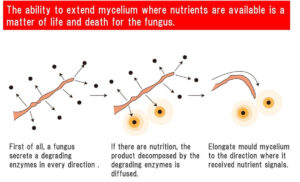In this article, we take a closer look at E. coli and the coliform bacteria family, two key players in food microbiology. What exactly are these microorganisms, and how do they differ? Where are they commonly found, and could they impact food safety? We’ll explore their presence in various environments, their roles as indicators in food hygiene, and why different countries regulate them differently. Let’s dive in to understand the unique characteristics of these bacteria and their significance in maintaining food safety standards worldwide.
What is E. coli?
E. coli is a bacterium commonly found in the intestines of healthy humans. Did you know that around one-third of human feces’ weight consists of bacteria? Among these, approximately 0.1% is E. coli, meaning that every healthy person carries this bacterium in their intestines. In most cases, E. coli is harmless and doesn't cause any discomfort, even when it enters our body.
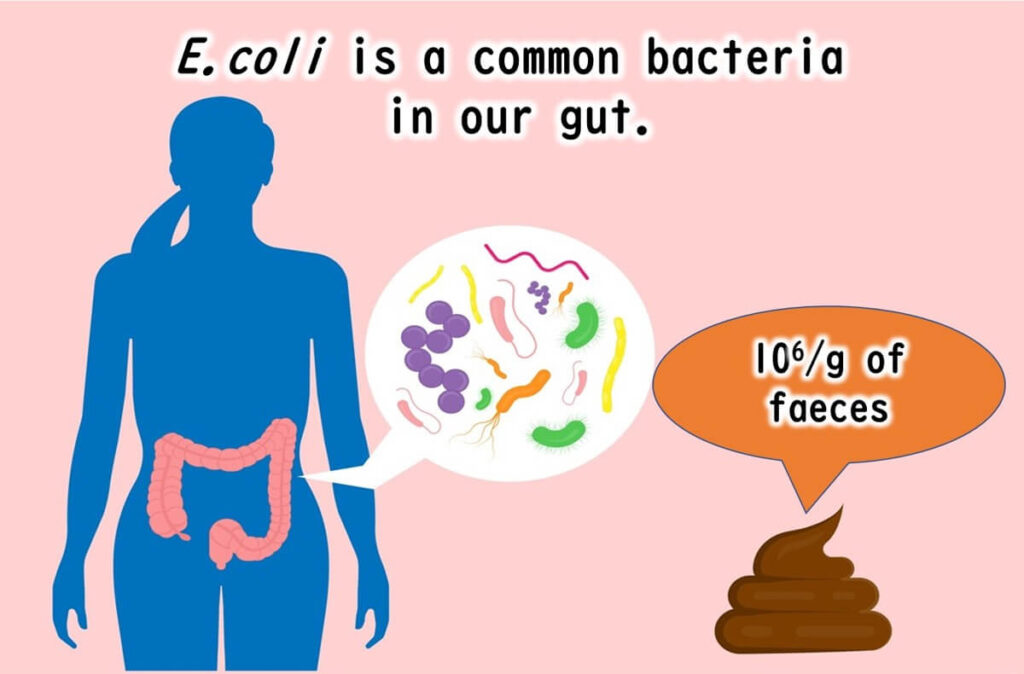
However, E. coli has a somewhat negative reputation in food hygiene. This isn't because of the bacterium itself but rather due to its presence as an indicator. Finding E. coli in food can be a sign that other harmful bacteria might also be present. It’s not E. coli itself that's the primary concern; rather, it’s often its “companions” like Salmonella or pathogenic strains of E. coli that can cause food poisoning.
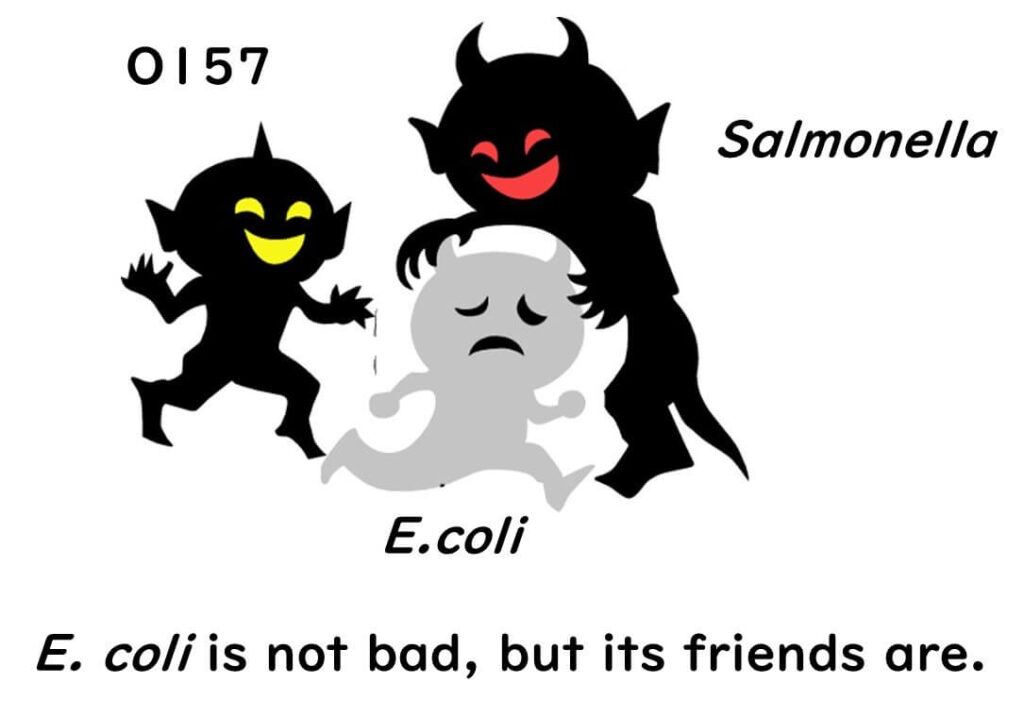
To be more specific, E. coli and other bacteria such as Salmonella are gram-negative organisms that prefer the intestines of warm-blooded animals. They share similar environmental needs, such as temperature, nutrient concentration, and pH levels.
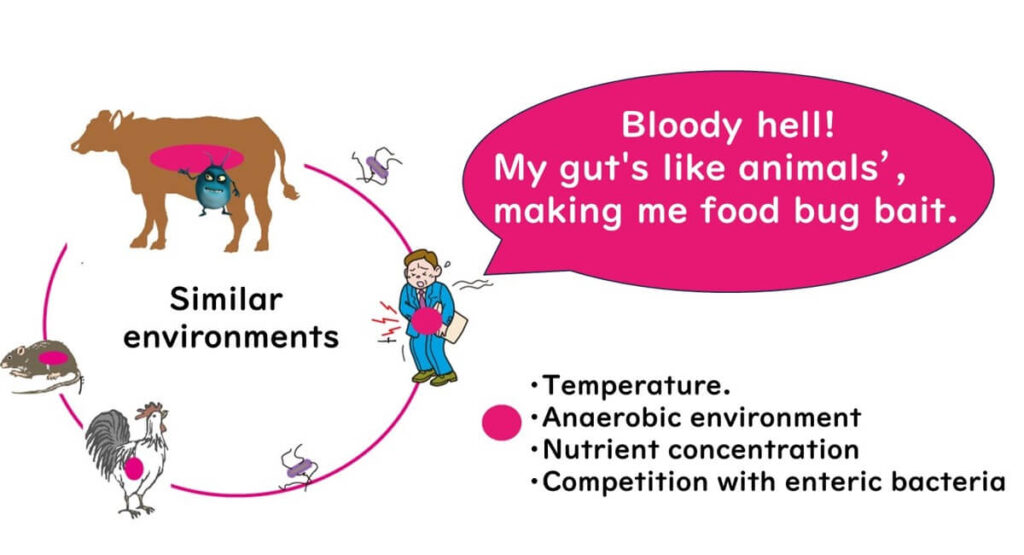
However, once outside the body and in the external environment, these bacteria don’t survive for long.
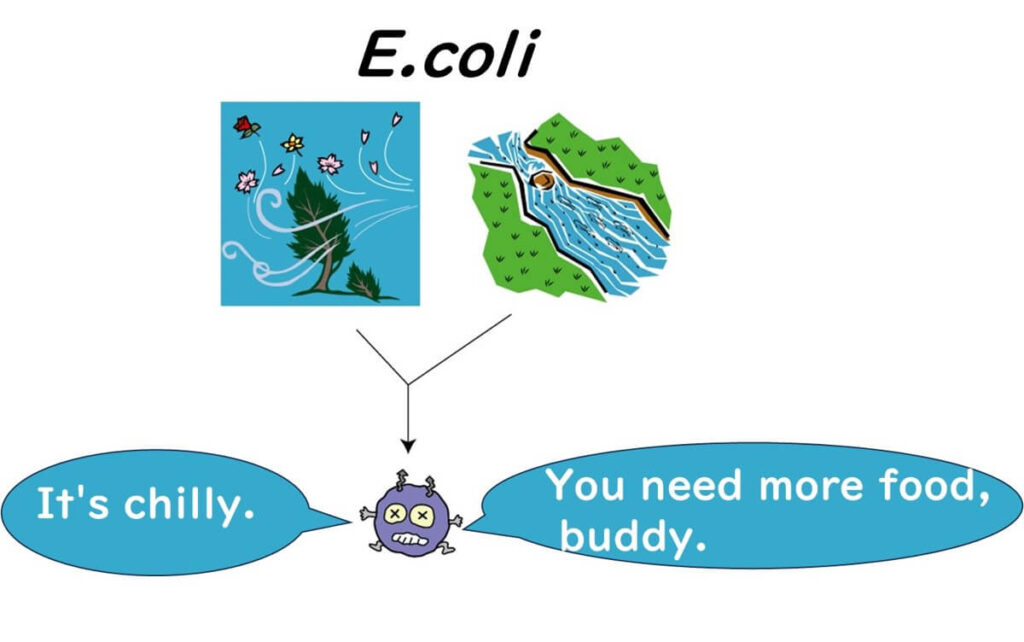
For instance, in low-nutrient environments like the middle of the Pacific Ocean, they struggle to compete for resources and ultimately perish. E. coli and similar bacteria are also more sensitive to drying out compared to other types.
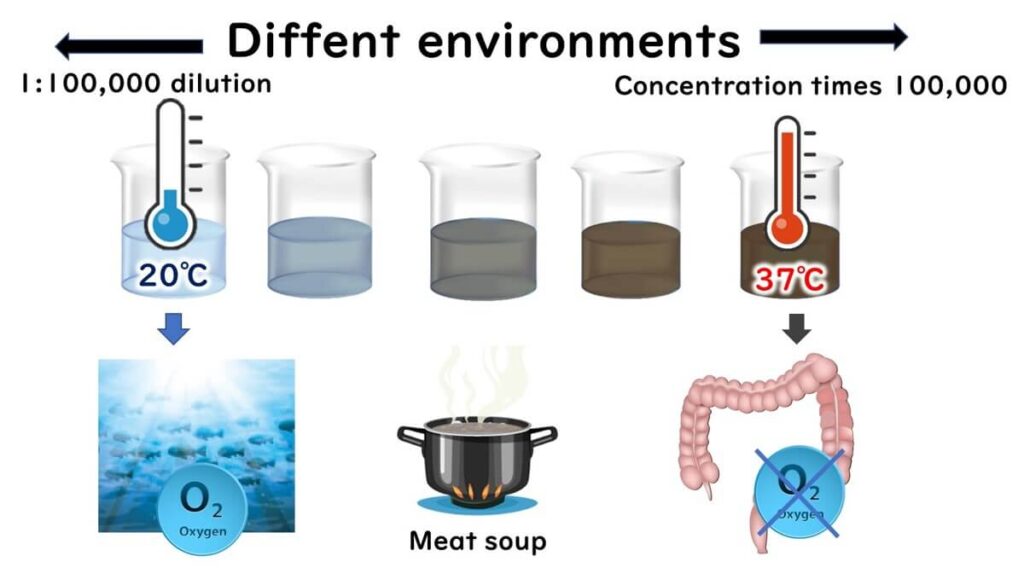
In summary, detecting E. coli often indicates the potential presence of harmful gram-negative bacteria, making it an important marker for food safety.
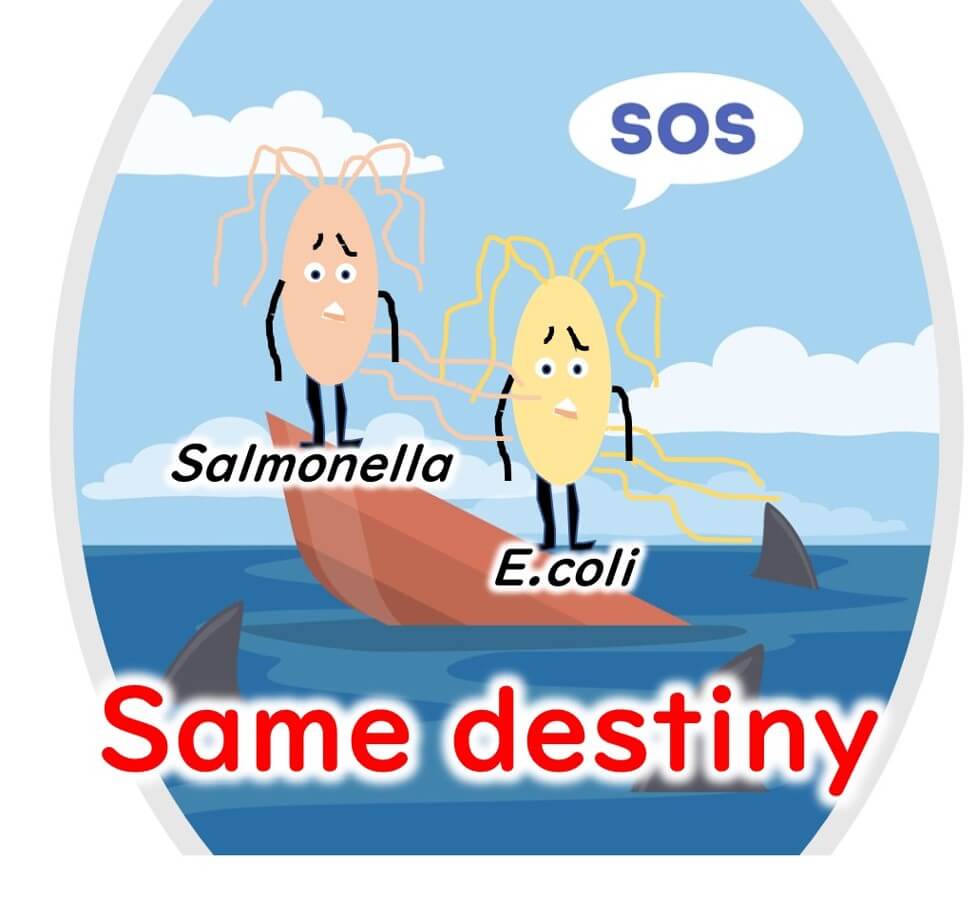
Difference Between E. coli and Coliform Bacteria: Understanding Key Distinctions
Now, let’s dive into what the coliform bacteria group entails and how E. coli fits within it. The coliform group is a broader classification of bacteria that includes E. coli as well as other genera like Klebsiella and Enterobacter.

By textbook definition, coliforms are “gram-negative, facultative anaerobic rods that ferment lactose to acid and gas within 48 hours at 32–35°C.” Lactose, a sugar mainly found in mammalian milk, serves as an indicator of these bacteria’s close relationship with mammals.
Which bacteria can utilize lactose? Some gram-positive lactic acid bacteria can, though not all. In contrast, gram-negative bacteria that ferment lactose are classified as coliforms. This similarity in lactose utilization suggests a shared evolutionary adaptation with mammals.
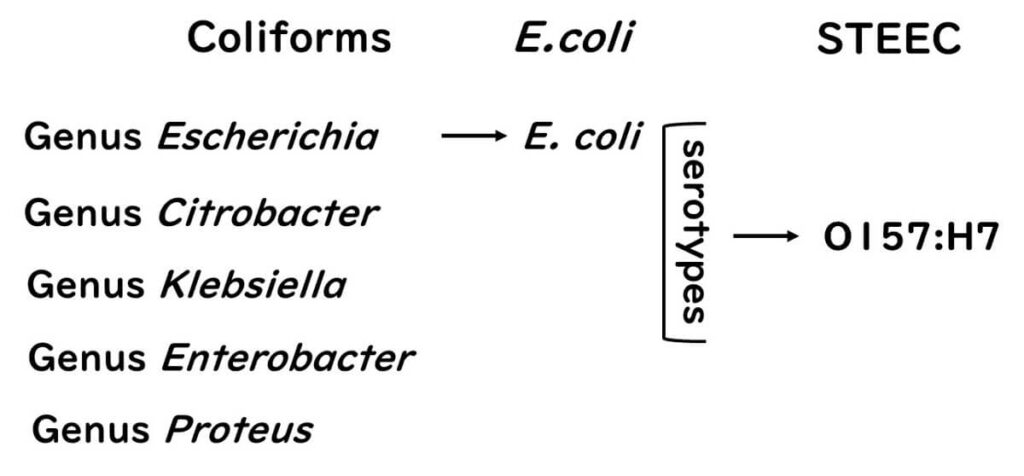
Historically, coliforms have been used as sanitation indicators due to their ease of detection. Testing media, such as MacConkey agar or desoxycholate agar plates, reveal lactose fermentation through visible color changes in colonies. Additives like bile salts or crystal violet in these media suppress the growth of gram-positive, lactose-fermenting bacteria, ensuring that only gram-negative coliforms are detected.
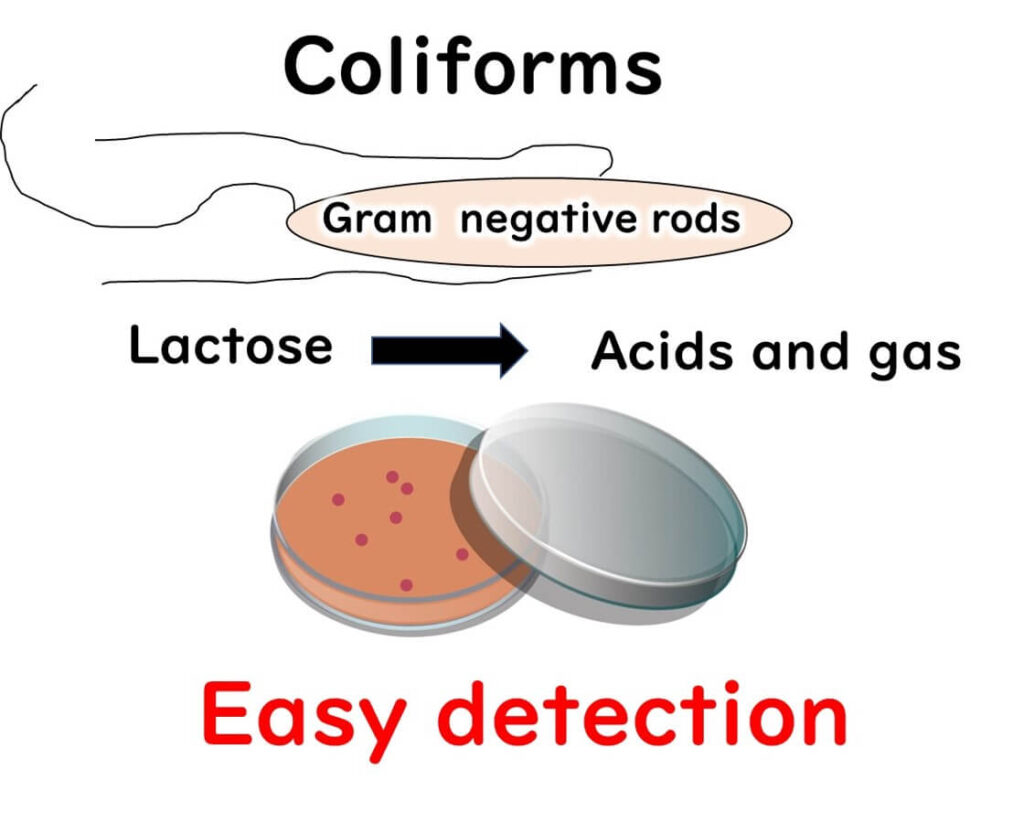
E. coli as a Faecal Indicator: Role and Limitations of the Coliform Group
Imagine you’re drinking milk. The coliform bacteria group, which includes E. coli, is closely related to mammals due to its ability to ferment lactose, a sugar commonly found in milk. In fact, coliform bacteria are consistently present in human faeces, making them relevant as indicators of faecal contamination.
However, here’s an interesting point: not all bacteria in the coliform group are directly associated with faeces. Some coliform bacteria live entirely independently in environments unrelated to faecal matter. Whether these bacteria evolved from faecal coliforms or have adapted to different environments over time remains a topic of debate among scientists. What we do know is that some coliform bacteria classified under this group can thrive in pristine natural habitats, far removed from any association with human waste.
In short, not all coliform bacteria serve as reliable indicators of faecal contamination. This is because many can survive and grow in environments that have nothing to do with faeces, challenging the assumption that coliforms alone can signify contamination.
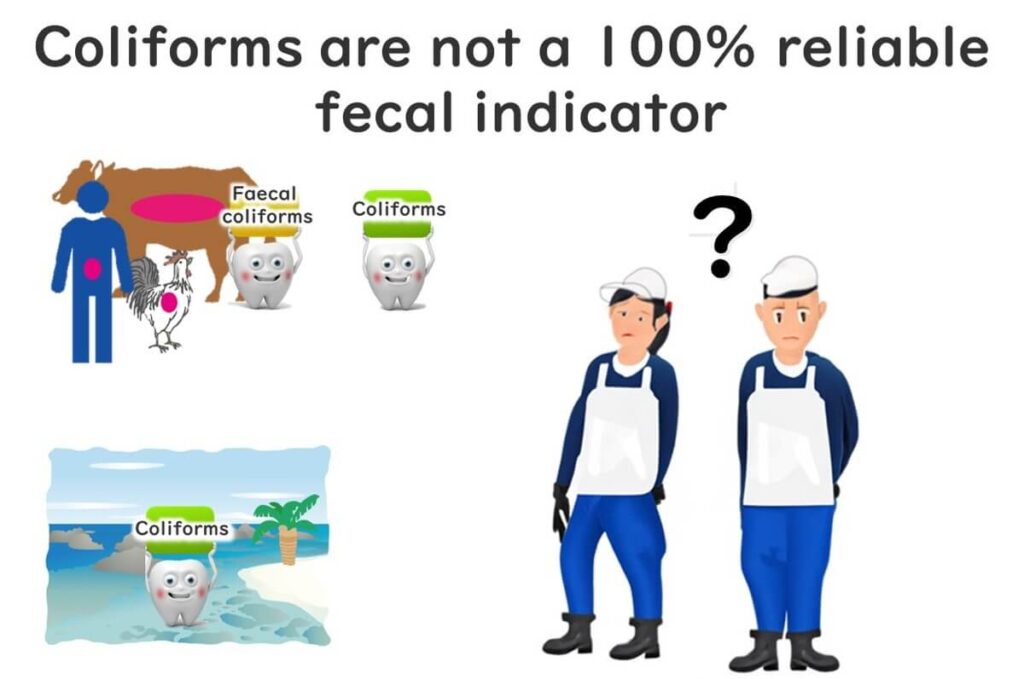
What Are Faecal Coliforms and How Do They Relate to E. coli?
Within the coliform group, the primary indicator of faecal contamination is E. coli. To identify bacteria closely related to E. coli, scientists perform a simple test: they check if the bacteria can multiply at a high temperature of 44.5°C. Bacteria that pass this test are classified as “faecal coliforms” (or FC for short).
The broader coliform group includes bacteria not associated with faecal matter, and many of these cannot grow at 44.5°C. This temperature threshold helps isolate bacteria like E. coli that are more indicative of faecal origins. Due to this specificity, the World Health Organization (WHO) recommends faecal coliforms as a useful alternative to E. coli for assessing water quality, especially in challenging testing conditions.
However, not all faecal coliforms are identical to E. coli. The term “faecal coliform” refers to a testing category rather than a single type of bacteria. Within this category, some bacteria aren't directly linked to faecal matter, and some researchers suggest the more accurate term "thermotolerant coliform" for these organisms. Understanding this distinction is essential.
In food hygiene practices, faecal coliforms are commonly treated as proxies for E. coli when assessing contamination risks. In Japan, for example, faecal coliforms serve as a standard indicator of contamination in various food products, underscoring their importance in maintaining food safety.

How E. coli, Coliform, and Faecal Coliform Bacteria Are Defined in Japan’s Food Safety Standards
In this section, we’ll explore a unique aspect of Japan’s food safety regulations concerning E. coli, coliform bacteria, and faecal coliforms. While you may not be specifically interested in Japanese regulations, understanding how different countries classify these bacteria can provide valuable insights into global food safety practices.
To begin, let’s look at Japan’s approach to defining two key indicator bacteria under its food hygiene laws:
- Coliform Bacteria
- E. coli (written in block letters)
What’s noteworthy is that Japan refers to E. coli in block letters rather than the italicized form used internationally. Internationally, E. coli in italics signifies the well-known Escherichia coli species. However, in Japan’s food hygiene law, block-letter E. coli doesn’t refer to Escherichia coli itself but to the broader faecal coliform bacteria group.
On a global scale, faecal coliform bacteria are typically abbreviated as FC. There is no international standard that equates block-letter E. coli with faecal coliform bacteria. However, within Japan’s regulations, this block-letter E. coli uniquely represents the faecal coliform group. While this distinction may be confusing, it’s essential to understand this regulatory framework when discussing food safety in Japan.
Why Japan Continues to Use Coliform Bacteria Standards for Food Safety
In Japan, specific standards for coliform bacteria are maintained for foods like raw frozen seafood, despite the shift in international standards, such as the Codex Alimentarius, towards E. coli as a more direct indicator of food safety. This divergence raises questions, especially among Southeast Asian food exporters who face differing regulatory requirements from Japan and the EU.
During my seminars on food microbiology in countries like Thailand and Vietnam, I’m often asked, "Why does Japan still require coliform bacteria standards? Why not just follow the EU’s example and focus on E. coli?" This question frequently arises among stakeholders in Southeast Asia who navigate these varying food safety requirements.
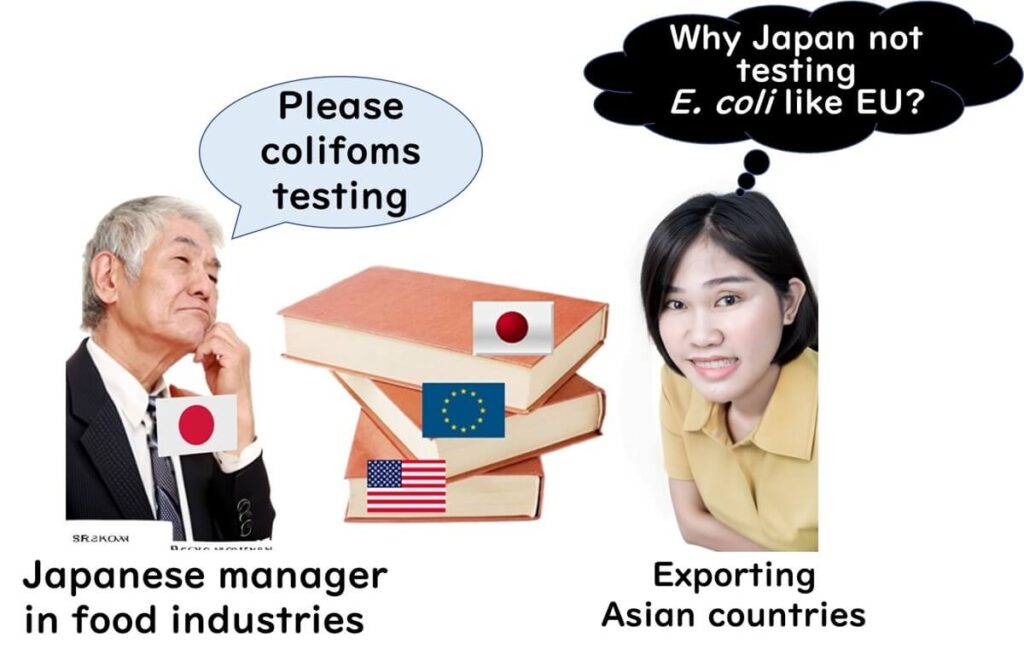
Japan's emphasis on coliform bacteria extends beyond raw seafood and into the private sector. Many food producers are curious why certain foods are subject to coliform standards or the uniquely defined block-letter E. coli, leading to some confusion among food regulators and producers alike.
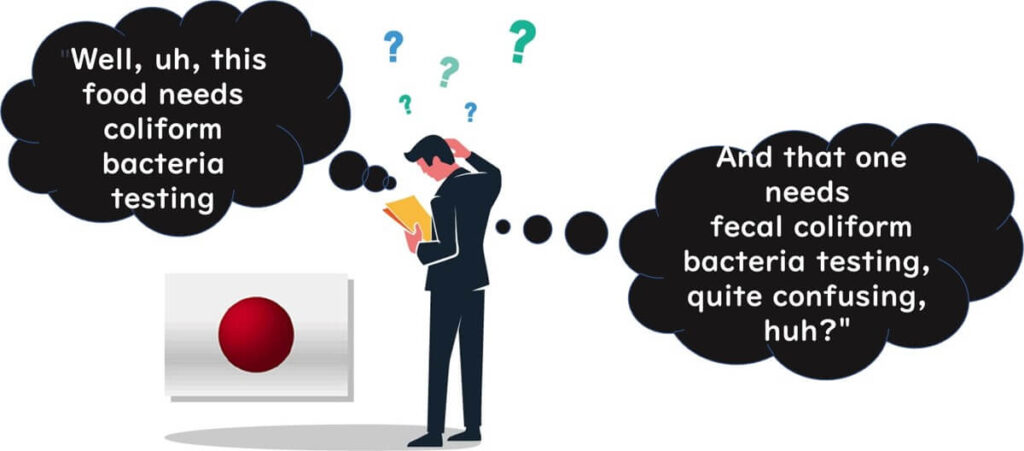
In Japan, coliform bacteria are not solely seen as indicators of fecal contamination; they also serve as markers of processing quality to ensure food safety, similar to how the United States uses coliform standards for dairy products. However, this approach becomes more complex across various food categories, where coliform standards alone may not fully address safety concerns.
Fecal Coliform Bacteria (Block-letter E. coli)
Fecal coliform bacteria, also known as block-letter E. coli, are a group of indicator bacteria that closely resemble regular E. coli. While not identical, they are similar enough to act as indicators of contamination from fecal matter. For example, in products like raw ham, roast beef, and dried meats like salami, the detection of coliform bacteria from original ingredients does not necessarily indicate poor hygiene practices. Therefore, using fecal coliform bacteria as a standard for these products is scientifically sound.
Internationally, however, it may be more desirable to transition to regular E. coli (written in italics) to align with EU standards.
Coliform Bacteria’s Role in Food Safety
Coliform bacteria serve purposes beyond indicating fecal contamination, including:
- Indicating the effectiveness of heating in cooked foods.
- Acting as markers of secondary contamination after cooking.
These practices, like those of the FDA for dairy in the United States, ensure that hygiene standards are met post-cooking. However, coliform bacteria as indicators have limitations, especially since cases of insufficient cooking are rare, reducing their effectiveness. This raises the question: would a general bacterial count be sufficient instead?
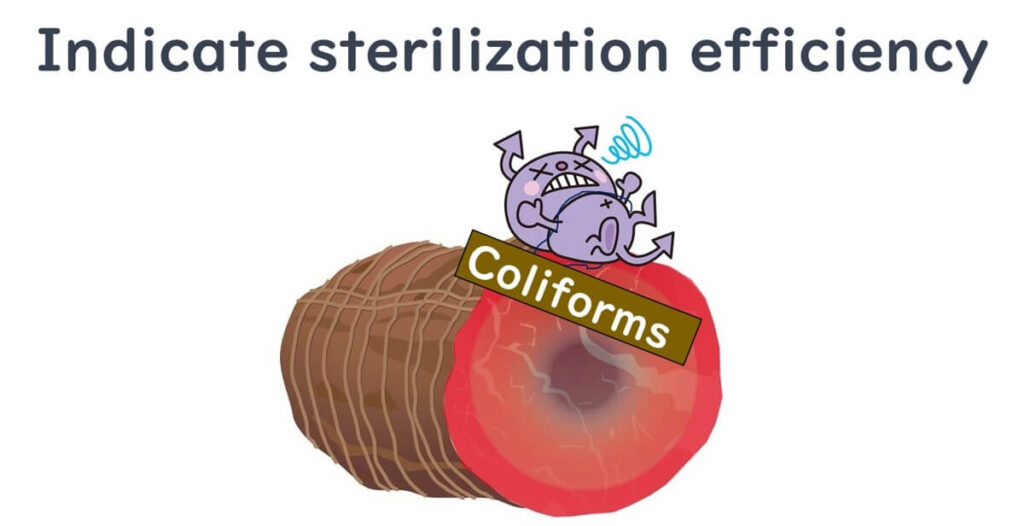
The use of coliform bacteria for secondary contamination makes sense to some extent. As I explain in seminars, detecting coliform bacteria post-cooking is likely a sign of secondary contamination from processing facilities, as original bacteria would have been killed during cooking. However, even this reasoning has complexities. Some question whether regular E. coli could serve this purpose just as effectively.
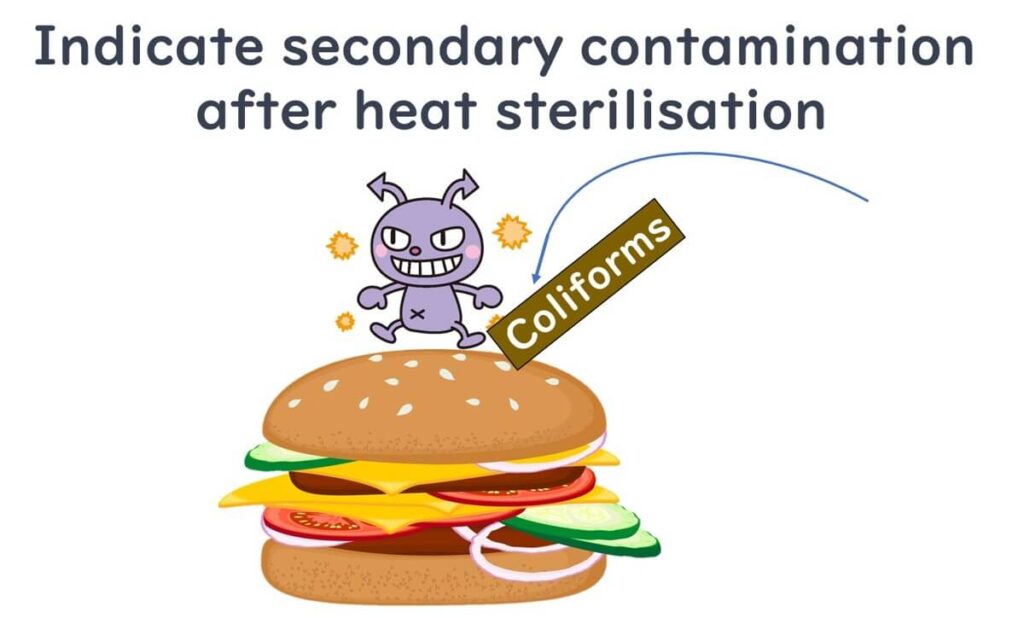
The continued use of coliform bacteria as a standard may stem from historical contexts, where they were easier to test than regular E. coli. Advances in testing have now made E. coli detection just as convenient, and EU standards reflect this shift. Recent discussions, even in the US, have proposed using other Gram-negative bacteria like Pseudomonas for secondary contamination indicators, suggesting that a transition away from coliforms may be on the horizon.

Key Takeaways on E. coli and Coliform Bacteria in Food Safety
To conclude, let’s highlight a few key takeaways. First, E. coli and coliform bacteria are foundational elements in food microbiology. Grasping their roles and impact on food safety is crucial, whether you're an aspiring microbiologist or simply interested in the science behind food hygiene.
While we’ve explored the specifics of Japan’s food hygiene standards, particularly the emphasis on coliform bacteria, it's important to recognize that this represents just one part of a larger, global discussion in food safety. If the details of Japanese regulations aren't your primary interest, the earlier sections provide a solid understanding of the core concepts surrounding E. coli and coliforms in food safety practices.
